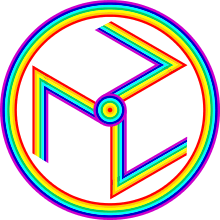Antahkarana
In Hindu philosophy, the antahkarana (Sanskrit: the inner cause) refers to the totality of two levels of mind, namely the buddhi, the intellect or higher mind, and the manas, the middle levels of mind which (according to theosophy) exist as or include the mental body. Antahkarana has also been called the link between the middle and higher mind, the reincarnating part of the mind.[1]

In Vedāntic literature, this antahkaraṇa (internal organ) is organised into four parts:[2]
- Ahamkāra (ego) – identifies the Atman (self) with the body as 'I'
- Buddhi (intellect) – controls decision making
- Manas (mind) – controls sankalpa (will or resolution)
- Chitta (memory) – deals with remembering and forgetting
Another description says that "antahkarana" refers to the entire psychological process, including mind and emotions, are composing the mind levels, as described above, which are mentioned as a unit that functions with all parts working together as a whole. Furthermore, when considering that mind levels are bodies, they are: manomayakosha - related to manas - the part of mind related to five senses, and also craving for new and pleasant sensations and emotions, while buddhi (intellect, intelligence, capacity to reason), is related to vijnanamayakosha - the body of consciousness, knowledge, intuition and experience.
Antahkarana also refers to a symbol used in the Reiki healing method.
See also
References
- ↑ Bailey, Alice A. A Treatise on Cosmic Fire. Lucis Press, LTD 2005
- ↑ "Antahkarana - Yoga (definition)". En.mimi.hu. Retrieved 2011-06-10.